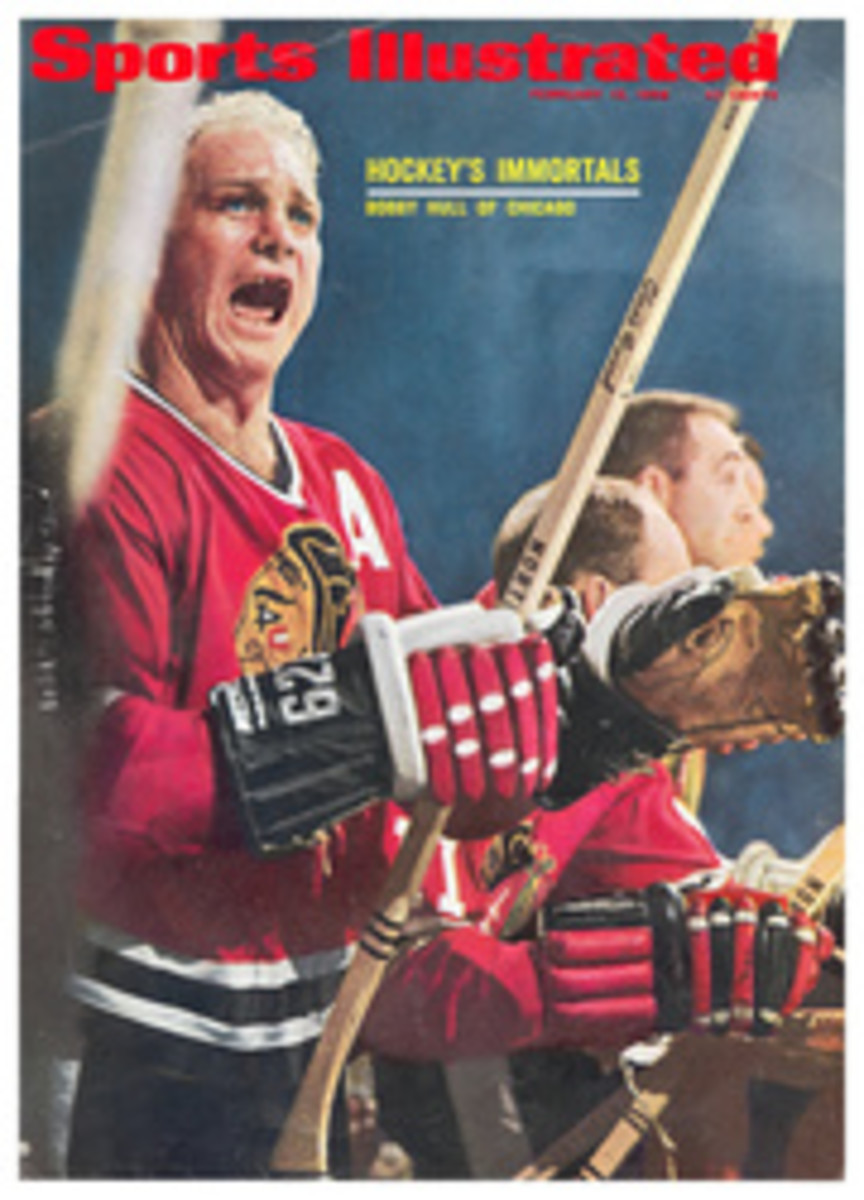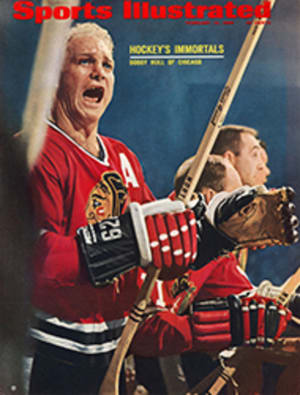
Bituminous Time in the Bronx
If it is true, as the saying goes, that playing a tie is like kissing your sister, then the men who in the mid-'30s played football for Fordham and Pittsburgh hold the alltime American record for, well, simulated incest. Three straight times—1935, '36 and '37—they battled one another in the Polo Grounds, and the final scores were 0-0, 0-0 and 0-0.
Jock Sutherland, a tall, grim man with a Scottish burr, coached Pitt at the time, presiding over a sort of thresher-type single-wing offense that ground opponents to ribbons, all the while abjuring the forward pass as a frill for sissies. Through seven years, 1931-37, Pitt never lost more than a single game per season. Stocked in depth right down to the third team with the toughest soft-coal miners in Pennsylvania and West Virginia, the Panthers also could brag about a defense that during those seven years averaged six shutouts a season.
As the ranking powerhouse of the East, Pitt decided to embellish its image by booking a series of New York appearances for exposure. Fordham seemed a likely opponent. The Rams, coached by Sleepy Jim Crowley, the ex-Horseman from Notre Dame, were coming into the big time and yet did not appear to have reached the point where they could handle Pitt.
November 2, 1935, the date of the first Pitt-Fordham game, drew near with both teams showing identical records—four victories and one defeat. But Pitt's defeat was by only three points, at the hands of Notre Dame. Bookmakers, who in those days did not bother to calculate point spreads, made the Panthers 2½-to-1 favorites. "According to all available information," a Pittsburgh newspaperman wrote two days before the game, "the Crowley line is nothing over which to become excited." The Crowley line, as it happened, was to become legendary as the Seven Blocks of Granite.
The game was a dreary affair, distinguished only for its clean but brutal tackling. Between the 20-yard lines, the field was soggy; it may have been soggy inside the 20s, but neither team penetrated that deep to find out. In the end Fordham outgained Pitt, 150 meaningless yards to 73. The crowd, jubilant over a moral victory, surged onto the field and tore down the goalposts. This, plus a short argument that occurred on the train carrying Pitt home, accounted for the entire weekend's excitement.
The betting again was on the Panthers when they returned to New York in 1936. A week earlier they had manhandled Notre Dame 26-0. Halfback Mad Marshall Goldberg, a sophomore sensation, had gained 113 yards. "In the open," wrote one journalist, "he travels with all the abandon of a typhoon on a holiday." By this time, however, nobody doubted that the Fordham line was as tough as any in the land. Undefeated in four games, the Rams had not given up a first down to either Southern Methodist or St. Mary's of California. Blockers found it virtually impossible to move Tackle Ed Franco, though he stood only 5'9" and weighed but 200 pounds. At right guard Vince Lombardi was, of course, tough and cunning. Crowley's game plan was 90% defense. He instructed his linemen to concentrate on destroying the Pitt blockers before they crossed the line of scrimmage. Linebacker Alex Wojciechowicz, whose range was proportionately as wide as his name, would nail the ball carrier.
For two quarters the teams waged a bruising war that led nowhere. The second-half kickoff, however, sailed into the arms of Bobby LaRue, and he raced upfield through a funnel of Pitt blockers, emerging in the clear near midfield. Only one Fordham man, Andy Palau, stood in his path. "My God, with the New York press in the stands," says LaRue, "there was my chance to make All-America. I threw the guy a fake, a very nice hip fake that by all rights he was supposed to take. But he didn't. He was too dumb."
Late in the third quarter LaRue again seemed in a position to score. Pitt had driven to the Fordham three and now faced fourth down. LaRue set himself to smash over his right side, between guard and tackle. "But there was a little mix-up in our signals," he remembers. "I went in low and hard, but our guard, Biff Glassford, got his big bucket in the way." LaRue plowed headfirst into Glassford's big bucket, then rebounded and started again. "Wojciechowicz lathered me," he sighs. "He almost tore me apart."
The game resumed its agonizing format. All the while a substitute quarterback named Bob (Jerk) McClure sat on the Pitt bench wondering why his team kept trying to batter away at a Fordham defense that clearly was overloaded up front to stop the running game. Suddenly McClure heard Sutherland directing him into the game. Without consulting the coach, McClure immediately devised a plan.
He ordered the Panthers into a double wing, a formation that lent itself to the long pass. The quarterback, McClure in this case, ordinarily would throw the pass, but McClure reminded himself that Sutherland hated only two things worse than a pass—an incomplete pass and an intercepted pass. Prudently McClure cast around for a back who would exchange positions with him and throw the ball. He selected Left Halfback Johnny Wood, a reckless mountaineer from West Virginia who punted barefoot.
Deep in the double wing. Wood cocked his right arm as he saw his receiver race into the clear with ridiculous ease. Wood fired long. Alas, the ball ticked off the receiver's fingertips. Sutherland, possessed of a clear eye when it came to getting to the bottom of chicanery, jerked Jerk McClure from the game, which then ground on, deathlike, to its conclusion.
Actually, a third scoreless tie seemed an impossibility, for in 1937 Pitt fielded a juggernaut regarded by many as the school's most powerful in history. The best evidence was that John Michelosen and Johnny Chickerneo, the first-and second-string blocking backs, kept a man named Ben Kish on the bench. Kish was to play 10 years of professional football. In New York, Jim Crowley noted that his scout, Hugh Devore, had been so shaken by the sight of Pitt's offense that enroute home he lost his head and tipped a porter a quarter.
For the better part of the first half Fordham's line frantically managed to stave off Pitt's attack, but late in the second quarter Pitt stormed to the Fordham five. There the backfield lined up in left formation, with Curly Stebbins at tailback and Goldberg at wingback. Stebbins took the snap and started to his left. Goldberg, meanwhile, peeled out of the formation, gathered in a reverse from Stebbins and swept deep around the right side. Pitt's famous deep reverse caught the Fordham defense moving in the wrong direction, and Goldberg raced untouched into the end zone. The play had been perfectly executed, except for one detail. On a meaningless patch of ground far from the action, Pitt's left tackle, Tony Matisi, was seen holding.
The touchdown was nullified, and Matisi screamed at the officials. A devout Catholic, he returned to the Pitt huddle and swore on the names of the saints and on everything holy that he had thrown a perfect block. "The next day," says Curly Stebbins, "I open the Sunday paper—the New York Daily News—and there is the most beautiful picture of the most beautiful stranglehold you ever saw. Tony is in a crouch with his left arm around this Fordham guy's leg, hanging on to him for dear life, and the Fordham guy is standing up but sort of leaning, as if he's holding on to something, I can still see the whole scene. It reminds me today of the flag raising at Iwo Jima." The Fordham player was Al Gurske. From Gurske's location on the field, says Stebbins, he could not have made the tackle had Goldberg been running 200 yards.
The clock ran out before Pitt again could thrust into the end zone, but in the second half the Panthers' big, swift backs went right back to thrashing the Fordham line. Stebbins ran brilliantly. Time and again he knifed his way sizable distances. The only trouble was, he kept leaving the ball behind for Fordham to fall on.
Stebbins' five fumbles plus three others made a total of eight for Pitt. Published accounts of the game vary according to the size of the reporters' hip flasks, but at least six of the fumbles were recovered by Fordham. One occurred at Pitt's eight-yard line and two others inside the Pitt 30. Once the Rams plowed nicely through the Pitt line from the 28 to a first down on the 10, whereupon, they astonished the crowd by throwing three passes—all incomplete. "They started to think," says Frank Carver, then press agent, now Pitt athletic director, "and that's always dangerous for a football team." Jim Crowley, who today is industrial commissioner for Lackawanna County, Pennsylvania, cannot remember which of his quarterbacks called those three pass plays, or why, but he is indignant at Carver's words. "You can't ever accuse any of my teams of thinking," snorts Crowley.
Having played a third time to no purpose, Pitt and Fordham had set a record for offensive ineptitude that, in all probability, will never be equaled. Crowley remembers that as he crossed the field and shook hands with Sutherland, both of them were mortified. "I would rather have been beaten 27-20 than have this happen again," Crowley earnestly told his rival.

